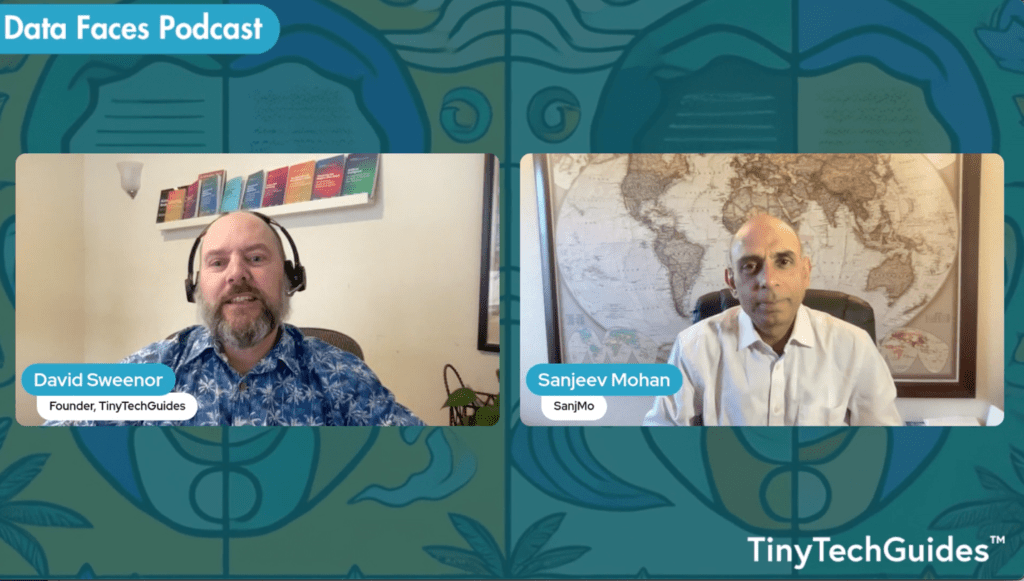
Five Key Patterns Every Business Leader Should Know
It’s All About the Words
From early rock art on cave walls to today’s emoji-laden chats on social media, the evolution of language has consistently been at the heart of human advancement and achievement. The development of our language has paved the way for some of civilization’s most significant milestones. From the ancient Egyptians with their pyramids to the Romans with their aqueducts and our modern space program—none of this would have been possible without words. Yet, the intricacy of our linguistic heritage is more fragile than we might realize. According to an article in Scientific American, “Scientists are aware of more than 7,100 languages in use today. Nearly 40 percent of them are considered endangered, meaning they have a declining number of speakers and are at risk of dying out. Some languages are spoken by fewer than 1,000 people, while more than half of the world’s population uses one of just 23 tongues.”[1]Now, with the rise of ChatGPT and generative AI, further advancements will be made. Innovative insurance leaders who quickly adopt generative AI technologies will gain a significant competitive advantage over their slower peers.
At its core, language is our primary conduit for expression, understanding, and interaction. I know they say 70%-90% of communication is nonverbal, but without our words, we’d be up the creek! This intrinsic human attribute is a fundamental reason behind ChatGPT’s popularity. Its adoption en masse isn’t just a technological trend, but rather a reflection of how deeply it resonates with our age-old affinity for words. People have gravitated to generative AI for four primary reasons:
- Approachable and intuitive: Generative AI’s beauty lies in its simplicity. There’s no steep learning curve; its interface is our everyday language.
- Accessible: After the first iPhone was released, software usability became a priority. Gone are the days of cumbersome manuals and tedious training. With generative AI, just open a web browser or a smartphone app and start chatting.
- Helpful: Its applications are as diverse as our curiosities. From answering science questions, offering movie recommendations, or even rewriting this blog in the voice of the Bard [aka Shakespeare]. Just look at A16Z’s review of the top 50 generative AI products; the sheer number of different applications is not surprising, given the state of the market. But, if you look closely, the most popular products are squarely in the content generation and summarization space.
- Unlocks Creativity: While the words we speak and typer are certainly foundational to generative AI–its use cases span the creative realm. Generative AI can allow people who are not coders, artists, or musicians to use these tools to create nice-looking graphics, rock songs, or software code. I recently used it to analyze survey data, but more on that in another blog. However, as with all artistic endeavors, one must fully have the vocabulary—a foundational understanding—to fully harness its true potential. Personally, I’ve found I can’t get some of the image generators to generate what I want because I don’t know the jargon—what’s the difference between impressionism and abstract expressionism (yes, I had to Google major painting styles)? Beats me; that’s not my core skill.
In a nutshell, generative AI isn’t merely a tool; it’s a testament to the timeless power of language. Now, everyone, as long as they have an internet connection, can generate more words, images, computer code, and music.
Five Generative AI Patterns
As businesses begin to figure out how to integrate generative AI into their business processes, five key patterns have emerged that delineate their broad spectrum of capabilities.
- Summarization: In an age of too many documents, slack channels, knowledge bases, and emails, brevity is invaluable. Generative AI can quickly process and distill thousands of documents, be it intricate insurance policies or dense reports, into concise summaries. This aids in faster decision-making and reduces the cognitive load for professionals.
- Generation: Beyond summarization, generative AI can also craft new content from scratch. Whether creating personalized policies, claims letters, or writing code, the technology can generate diverse outputs tailored to specific requirements.
- Q&A: One of the capabilities I’m most excited about is the ability to dynamically answer questions from your customers, agents, actuaries, claims professionals, or underwriters. By analyzing a vast corpus of documents, generative AI can respond to specific questions, drawing from your unique and proprietary knowledge. This will take virtual assistants to the next level.
- Translation: The global nature of business today requires seamless communication across many different languages. Like the Babel fish in The Hitchhikers Guide to the Galaxy, generative AI can instantaneously translate things into about 100 different languages.
- Matching: Efficient resource allocation is pivotal for any business–whether it’s staffing call centers or responding to RFPs, generative AI is a great tool to match resources to specific tasks or problems.
These five patterns are fairly common across a number of different industries.
Generative AI in Insurance
Generative AI has begun to rewrite the playbook for the insurance industry, and most companies are taking a two-pronged approach to its implementation. First, they are picking the low-hanging fruit to augment existing processes. Simultaneously, they are thinking about reimagining and rearchitecting their long-standing processes to remove steps. Here is what both Property & Casualty (P&C) and Life insurers are considering.
- Compliance and Risk: Compliance in the insurance industry is an ever-evolving landscape. Generative AI enables automated compliance monitoring that allows companies to swiftly identify discrepancies and adherence to regulations.
- Fraud Detection: Insurers are always on the lookout for fraud. Generative AI can analyze vast datasets and help augment existing processes to detect additional anomalous patterns that might slip past human scrutiny.
- Training Materials: Regulations are continually evolving, and employees must stay current on the latest guidelines. As regulations change, generative AI can summarize the most recent regulations and create up-to-date training materials, ensuring staff stay abreast of changes.
- Front and Back Office Support: P&C and life insurance have unique challenges. For customer-facing activities, like call centers, generative AI plays a dual role. While its summarization and generation capabilities handle information efficiently, human agents can concentrate on fostering empathy, moving from mere “information-takers” to genuine “problem-solvers.” This can greatly enhance the digital experience, especially for affluent customers. Despite their complex transactional needs, these customers seek personalized yet fully digital interactions, akin to a digital ‘white glove’ service.
- Claims Processing: Within P&C, the claims process is undergoing a generative AI revolution. By summarizing and synthesizing vast arrays of information—from call transcripts and investigation notes to numerous documents, including medical, legal, and estimations—claims adjusters can swiftly pinpoint relevant information. Integrating AI at the intake stage of the claims lifecycle allows insurers to shift the claims value chain, effectively rearchitecting the entire business process. Such upstream integration is what industry insiders often refer to as achieving ‘nirvana.’
- Underwriting: The underwriting process in life insurance has witnessed a surge of interest in the applications of generative AI. By collecting, interpreting, and synthesizing a wealth of information—from demographics and lifestyles to medical data—generative AI expedites decision-making. This results in instant policy issuance to a wider customer base, often eliminating the need for medical exams, which was once a significant bottleneck.
- Group Benefits: This was a surprising use case for me and correlates with the matching pattern previously described. When insurers create request for proposal (RFP) responses for group benefit programs, generative AI can help match resources to projects. Generative AI can help in two ways. It can 1) analyze and summarize all of the previous RFP responses created and 2) take the best answers and match them to their prospect’s needs.
- Hyper-personalization at scale: Creating sales and marketing content is one of the primary use cases across all industries. By connecting proprietary insurance data (see my post on Generative AI’s Force Multiplier: Your Data) to LLMs (either through fine-tuning, RAG, or clever prompt engineering), insurers can create content that is specific and unique to the individual targeted. Generative AI applications can quickly gather the relevant details (for the target prospect or client) across the treasure trove of insurance data available and insert the relevant points in the generated content. This use case is also of keen interest to wealth managers for a white glove experience.
Summary
From ancient scripts on cave walls to today’s dynamic digital conversations, the essence has always been the words we choose. Now, in an era where technology meets tradition, insurance leaders hold the unique position to redefine the narrative. Here’s your strategic roadmap:
- Champion Customer Centricity: As leaders, recognize that generative AI isn’t just a tool—it’s your ally in curating unparalleled customer experiences. Adopt it to deliver hyper-personalized services, ensuring every policyholder feels uniquely catered to.
- Identify Impactful Use Cases: Beyond the tech jargon, zone in on the transformative potential of generative AI. From distilling complex policy terms into comprehensible insights to real-time query resolutions, ensure the company is at the forefront of innovative client interactions.
- Reimagine Business Workflows: Don’t merely incorporate AI—envision a future reshaped by it. As stewards of innovation, identify segments in your operations ripe for AI-led transformation, ensuring your firm stays not only current, but pioneering.
- Develop Data-Centric Mentality: The data you hold is a goldmine. As insurance and IT leaders, invest in modern, cloud-based infrastructures that turn this data into actionable intelligence to help create greater efficiencies with underwriting, claims processing, and fraud prevention.
- Embrace Evolution with Agility: In the dynamic realm of AI, the key is to foster a culture of continuous learning. Guide your teams to adapt and lead the change, ensuring your firm remains an emblem of adaptability and foresight in the industry.
By leveraging generative AI sooner rather than later, insurance and IT leaders won’t just be adapting to the future; they’ll define it.
If you’d like to learn more about artificial intelligence, check out my TinyTechGuide on Amazon.
[1] Tu, Lucy. “What’s the World’s Oldest Language?” Scientific American, 24 Aug. 2023, www.scientificamerican.com/article/whats-the-worlds-oldest-language1/.



